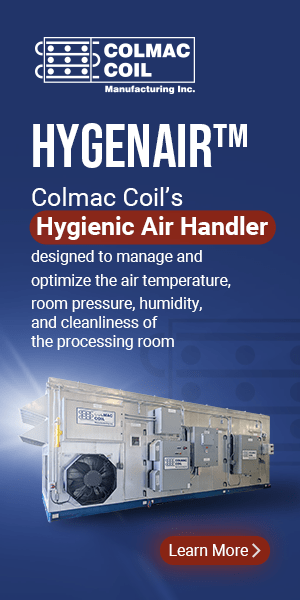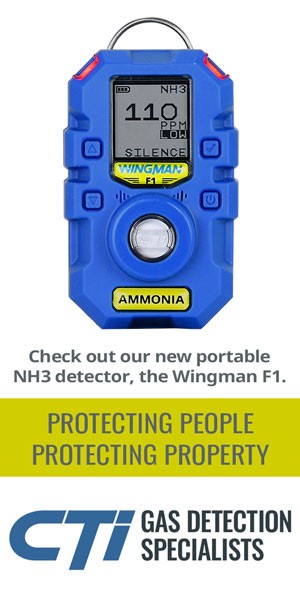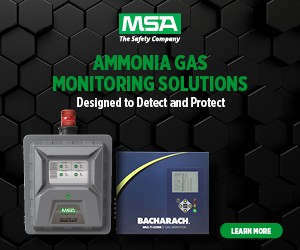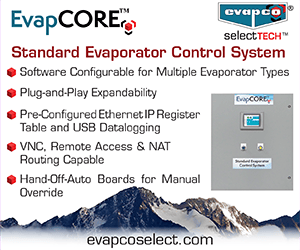Non-Condensable Gases in an Ammonia Refrigeration System

Non-condensable gases are foul gases and should not be thought of like water contamination, because they are vapors that will not liquefy in the refrigeration system at its operating pressures and temperatures.
Non-condensable gases may be introduced to a system during continuous operation or as a result of opening the system for service.
Systems that operate in vacuums on the low side provide sources for contaminants to infiltrate into the system. These leak sources may occur at valve stem packings, compressor shaft seals, bonnet gaskets, non-welded (threaded) connections, incorrect welds, and control transducers.
If piping, and, or, tubes are not properly secured, movement may occur causing rub points, pipe deterioration or weld cracks, resulting in a non-condensable leak source.
New systems must be completely evacuated prior to charging in order to ensure that all non-condensable gasses are removed. Similarly, when a system is opened for service, a complete evacuation must be performed prior to charge and startup to remove all contaminants.
Although relatively small in quantity, ammonia refrigerant that breaks down over time leads to accumulation of hydrogen and nitrogen in the system. The breakdown of the lubricating oils becomes hydrocarbon gases.
As these non-condensable gasses build up in the system, they must be removed through purging to ensure efficient operation of the system.
Accumulated non-condensable gases cause reduced condenser capacity and higher operating head pressures. The result is increased power input at the compressors and the operation of additional condenser fans in order to maintain system performance.
Energy costs continue to increase in an attempt to hold the system operating temperatures.
The overall refrigeration system decreases in efficiency and may reach a situation where the likelihood of an unplanned shutdown can occur.
As the compressor discharge superheat increases, the compressor wear accelerates, the refrigerant and oil breakdown, and these factors contribute to an increased scaling risk at the evaporative condenser tubes.
Scale building on the condenser coil may cause additional maintenance costs and decreases the condenser life.
For each four pounds of excess head pressure caused by non-condensable gases in the system, the energy cost to operate the refrigeration system compressor capacity increases 2 percent while the compressor capacity decreases 1percent. Installing a (proper type and sized) purger is essential to remove non-condensable gasses, and reduce the system’s short term and long term costs.
Removal of the non-condensable gases can be done manually or with a properly connected and operated automatic purger.
Manual purging can avoid the initial cost of the purger and its installation, but requires labor to perform each service.
Manual purging typically releases more refrigerant per purge, is an exposure risk, may be a local compliance concern, and the purge amount tracking (purge point counts and total open times) is not as consistent or accurate.
It is highly recommended to install a multi-point automatic purger that functions continuously to scavenge and remove the non-condensable gases. Although a purger can be used to remove non-condensable gases that are present due to inadequate system evacuations, it is highly recommended to perform the evacuations adequately prior to charging and startup.
Some systems that do not operate below atmospheric pressure (do not operate in a vacuum).
Non-condensable gases will eventually accumulate in these systems from the refrigerant and oil breakdown. Contaminants may also be present in the system due to inadequate evacuation.
Installing a (proper type and sized) purger on these systems is highly recommended.
The location to install purge connection points in the system piping is critical. Purging during system operation can be effectively accomplished if the purge points have been installed at the condenser coil outlets and the appropriate drain traps are installed.
The appropriate sized drain traps help capture the non-condensable gases at the condenser coil outlet purge points so the purger receives non-condensable gases instead of condensed liquid.
The non-condensable gases are carried through the condensing coil with the refrigerant liquid and vapor and tend to accumulate in the condensing coil outlet header.
All of the installed purge connections (multi points) on the condenser coil outlets can be cross connected to a single purge line which is connected to an automatic purger.
It is crucial that only one solenoid purge valve be opened at a time. Opening two or more valves tied together equalizes the coil outlet pressures and the effect of the vertical drop legs is lost.
Checking the system for noncondensable gases can be done by identifying the condenser pressure and temperature of the refrigerant leaving the condenser.
Use a Pressure-Temperature Chart to convert the temperature identified to what the theoretical condensing pressure should be.
If the actual gauge pressure reading taken of the condenser pressure is higher than what the theoretical condensing pressure comparison indicates, then the difference is indicating that non-condensable gases exit.
As an example, if a 10 pound difference is indicated, a 5 percent increase in power costs and a 2 ½ percent decrease in compressor capacity are occurring. Or, if a 20 pound difference is indicated, a 10 percent increase in power costs and a 5 percent decrease in compressor capacity are occurring. Non-Condensable Gases must be managed and removed to avoid higher overall increased operating costs.












